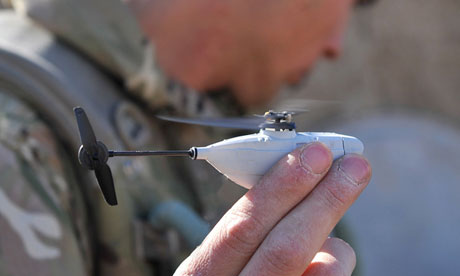
From Nick Hopkins, Guardian: Almost 450 drones operated by the British military have crashed, broken down or been lost in action during operations in Afghanistan and Iraq over the last five years, figures reveal.
The Ministry of Defence has disclosed for the first time the five Unmanned Aerial Vehicle (UAV) systems used in the conflicts and the number that have perished due to pilot error, technical faults or the undesirability of retrieving them from hostile areas.
The figures highlight the military’s increasing reliance on technologies that are regarded as a way of minimising risks to frontline troops. Officials say the UAVs have operated for thousands of hours on sensitive operations.
But the disclosure has also raised concerns among campaigners about their reliability. They say that some of the smaller drones, which are more prone to crashes, are similar to those already being flown in UK airspace.
"The drone industry constantly talks up the supposed economic benefits of unmanned drones, but it is the civil liberties and safety implications that need real attention," said Chris Cole, who set up watchdog website Drone Wars UK. . . .
The figures show the military has lost one Reaper drone since 2007 – it is the only UAV that carries Hellfire missiles as well as surveillance and intelligence-gathering equipment. The drone, which has not been replaced, cost £10m.
There have been nine losses of another large UAV, the Hermes 450. Eight of the £1m aircraft were lost in Afghanistan and another in Iraq. The surveillance fleet has halved in size because of the incidents.
The UAV to suffer most is the Desert Hawk 3, a small hand-held UAV used by the army: 412 have crashed or been lost in the last five years. British forces have been using other mini-UAVs, the Black Hornet, and the Tarantula Hawk, in Afghanistan; 25 of them have perished during operations. The Black Hornet is the latest piece of UAV equipment to be deployed in the conflict. A mini-helicopter, it is equipped with a camera which gives troops video and still images. . . .
"According to our analysis, there have been more than 100 crashes of the larger class of military unmanned aerial vehicles in over 20 countries since 2007," [said Cole]. (photo: Reuters)
Image: reuters%202%2013%2013%20Black%20Hornet%20Nano.jpg
